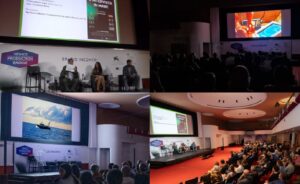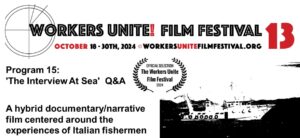The importance of spaces, venues, and ways to talk about the film
And here we are with the last bit of news we hadn’t yet shared about the Cefalù Film Festival. Since December 15, 2024, the interview book Behind the Fourth Wall: Conversations with Sixty-Four Directors has been available. The book features a series of interviews with directors who took part in the Cefalù Film Festival. We’re in it too, with an interview with director and sociologist Ludovico Ferro. Throughout the long and engaging conversation, we were able to delve into many topics, share anecdotes from the shoot, reveal direct references to other authors and films, talk about our vision of cinema, and how our filmmaking is deeply tied to a discourse on society. (The book is available for purchase on Amazon at [this link]).

But why did we wait so long to share the news? Part of the reason is already familiar to our readers. From September onward, a difficult and complex period began that essentially halted our ability to complete our communication efforts. We only shared essential updates. Maybe this one should have been considered essential too, but we were hopeful we’d soon resume recounting past festivals, so we waited. Then, in the last months of last year and the early months of 2025, we were also busy with the shooting of our new film (perhaps we’ll talk more about this new venture later), and more time passed.
Eventually, we realized this news could be the right opportunity to discuss a theme we had already touched on during the interview—when asked how the film was received by audiences. Our response obviously refers to the experience with festival audiences and the two special screening events we’ve had so far. In responding, we realized that the film was always well received—but it was received exceptionally well when we had the opportunity to talk about it.
In particular, we now clearly see that The Interview at Sea is a film that also needs to be explained. We had designed it to be accessible to very diverse audiences. This goal, we believe, was successfully achieved. The film is understandable, accessible, and enjoyable for general audiences, cinephiles, and professionals in the fishing sector alike. However, we hadn’t anticipated that this choice to speak to such a heterogeneous audience would itself require explanation. Why didn’t we make a film filled only with beautiful, striking images—of which we had plenty? Why, in a more canonical approach, didn’t we include more real interviews with fishermen, all of which we filmed? Or, again, why didn’t we fully develop the film as a dramatic, nocturnal piece in which, as in the long night sequence, only images, sounds, and noises speak?
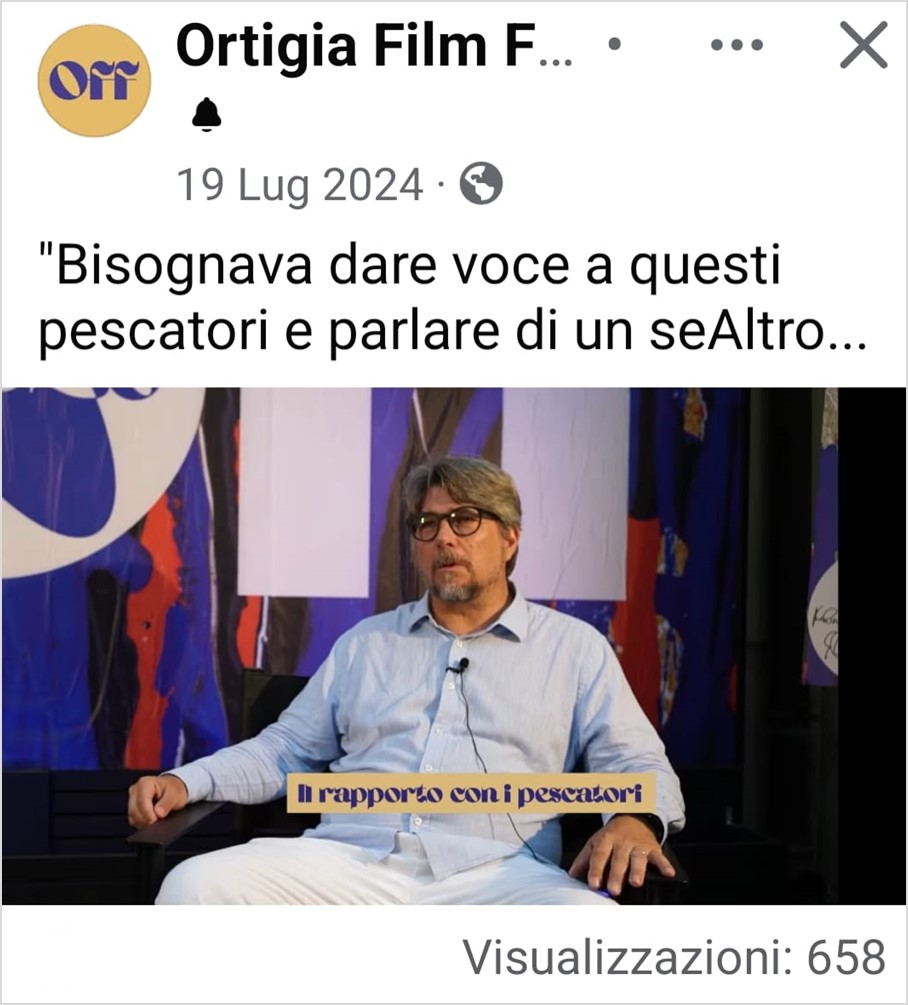
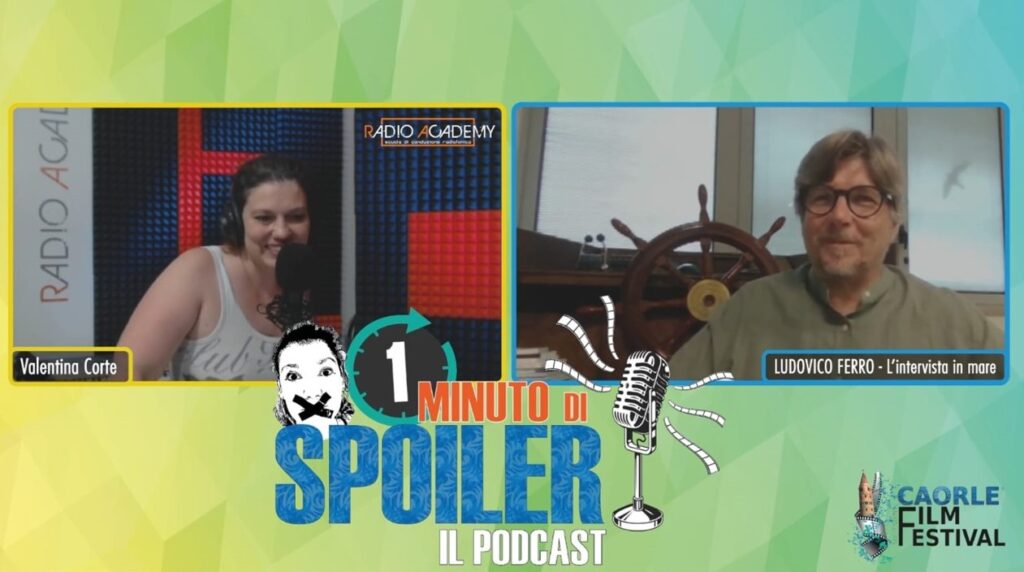
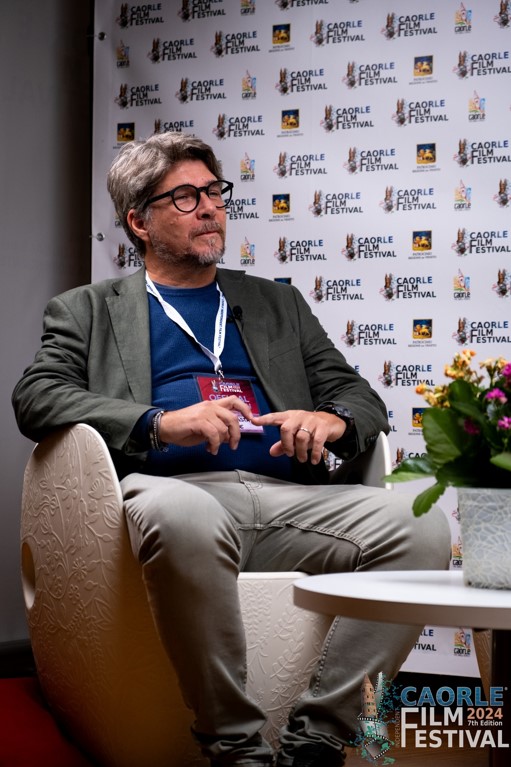
Wherever we had the chance to explain our narrative and directorial choices—and to connect them to the ethical and moral constraints we had set for ourselves—the film was understood and appreciated on a deeper level.
It wasn’t possible to do this everywhere, but there have been many opportunities so far, and what’s most interesting is that each festival found its own way to make that happen.
At the Ortigia Film Festival, director Ludovico Ferro was interviewed, and the video, still available on the Facebook page of the prestigious Syracuse-based event, remains their most viewed interview (here’s the link). It should be clear—even to those who know us only a little—that we’re not very inclined toward social media communication, and we certainly don’t thrive on the kind of high-impact news that quickly fades and is immediately replaced by louder headlines. We prefer long-term, in-depth discourse. And here in Ortigia, despite the web and social media format, we were able to share our vision of the film’s meaning. The credit doesn’t go to the medium, but to those who knew how to use it properly. Naturally, we extend our thanks once again to the festival organizers, who certainly aim for glamour and mainstream cinema, but also know how to give proper space to independent productions like ours.
Another interesting opportunity to talk about our film was at the Caorle Film Festival. Even before the festival began, we were interviewed in the “One-Minute Spoiler” format—again, a web and social approach (here’s the video). A longer interview was conducted during the festival as well. But the most important and unique opportunity was the collective panel with other directors. There, we were able to speak and engage with fellow filmmakers in front of a qualified audience, which asked very insightful questions. We found this panel format particularly effective and fruitful. It’s no coincidence that many of our fellow directors later asked to see the film, and that it’s now being requested by attendees for special screenings at upcoming events (we’ll share more about this soon).
Just ten days before the Caorle Film Festival, at the Venice Film Festival, we had the chance to be interviewed and talk about the film. On that occasion, in addition to the director of The Interview at Sea, actor Marco Manfredi was present, offering his perspective not only as an actor but also as the line producer for the fiction scenes.
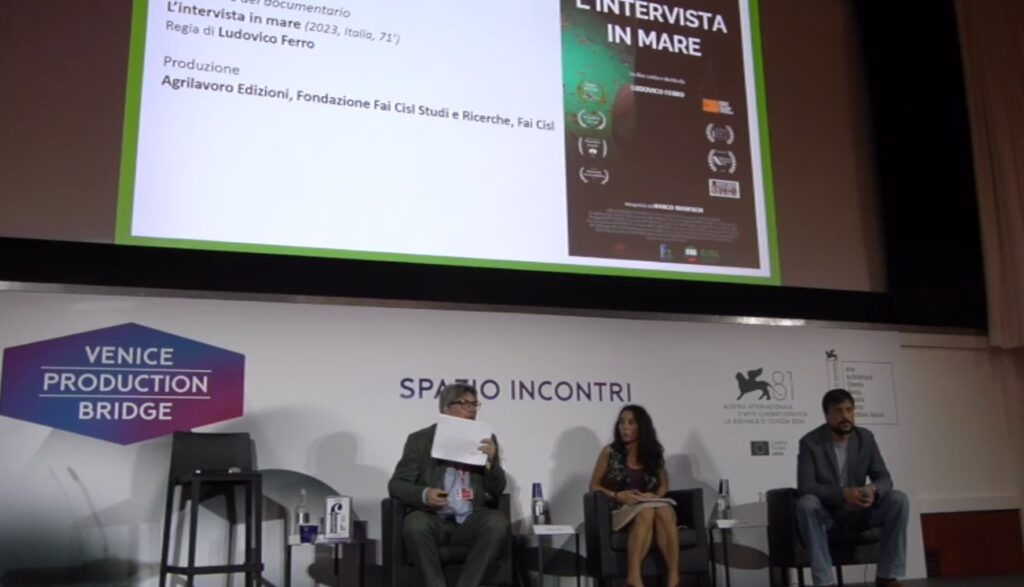
At the G7 screening in Syracuse, as we’ve already shared in detail, we had to stand before the audience and announce a tragic event involving one of the fishing boats featured in our film (articles here and here). Despite our concerns and the risk of media exploitation, this turned out to be a crucial moment for explaining what The Interview at Sea is truly about and what its real mission is.

At the Labour Film Festival, we spoke to the audience after the screening and answered questions from the festival director. The conversation with the audience continued even outside the theater. There, we had the opportunity to explain our stylistic choices and our relationship with the film’s producer, Fai Cisl. Choosing to make a film that was, first and foremost, Fai Cisl’s—thus even more a film by the fishermen—was not a forced decision but a deliberate one from the scriptwriting phase. We can clarify here that we didn’t want a large budget, even though we could have requested one. The financial backing was already in place, and we had no pressure or directives about how to proceed.
We could have made a film exclusively for festivals or cinephile audiences. It would have been our film, but only ours. That would have placed us among those who put their art (or interests) above everything and everyone else. The tragedy of the Lampara di San Benedetto would have revealed this “misappropriation,” which doesn’t apply to us. The film we could have made—and which not the producer, but the film industry professionals involved in production expected—is encapsulated in the Lampara’s night sequence.
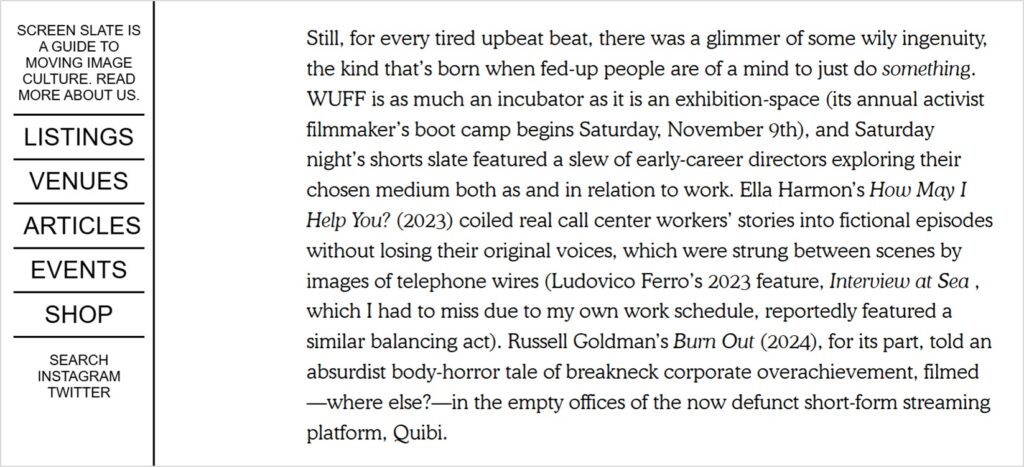
The last opportunity we had to talk about the film was at the audience meeting during the Workers Unite! Film Festival. We’re not using the conditional tense, even though the planned Q&A with the audience didn’t actually happen. But at the Workers Unite! Film Festival, it was the audience—whom we specifically described as “qualified” in our report article—who prompted the discussion about the cinematic choices behind the hybrid form of documentary and fiction in The Interview at Sea. The festival has a wide network of organizations supporting its activities and disseminating its content and insights through articles in magazines and on the web.
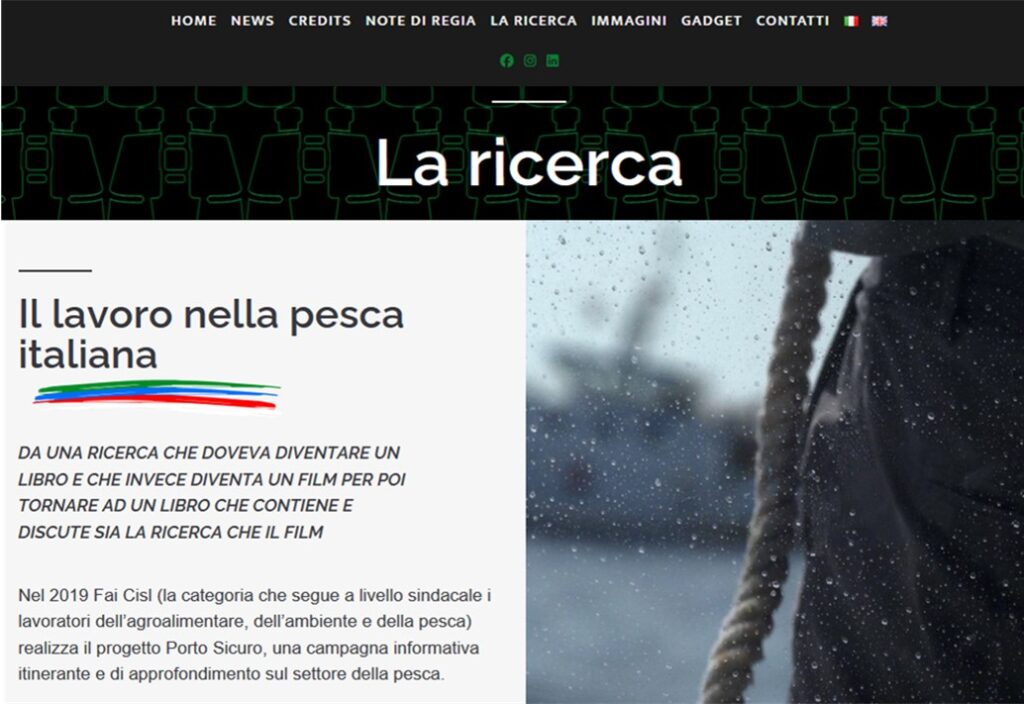
In conclusion, ours is a film to watch—but also one that requires context, either before or after the screening. The opportunities and formats for this can vary widely: at a festival, either side of a screening, in a panel discussion, on social media through videos or in-depth articles, or by reading a comprehensive interview, like the one in the book we mentioned at the beginning of this long digression (to date, perhaps the longest article we’ve ever written).
The most attentive readers may also have noticed that a section of our website, www.lintervistainmare.it, is dedicated to the project’s origins and research process—and that this journey won’t end with the film alone. At the conclusion of its distribution cycle, a book will be published to carry out, in a more systematic and thematic way, the kind of analysis and reflection we’ve aimed to preview here (link).
The Interview at Sea is certainly the centerpiece and culmination of a project—but it must be understood and evaluated also for its foundations and, later on, for the consequences it has already had and will continue to have as distribution progresses.
